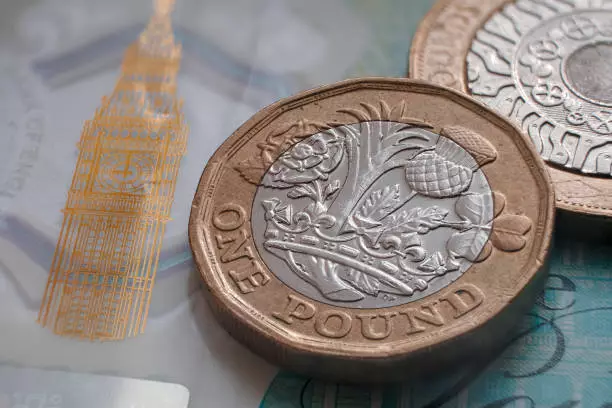In recent trading sessions, the British Pound has displayed a surprising vulnerability against the US dollar, challenging the optimism that long-time traders might have harbored just weeks ago. Despite attempts to capitalize on an optimistic economic outlook and political stability, the GBP/USD pair has faltered beneath the critical 1.3700 threshold. This resistance isn’t arbitrary; it signals a deeper shift in market sentiment where bearish momentum eclipses the bullish enthusiasm.
What stands out in this scenario is the formation of a discernible bearish trend line at approximately 1.3650 on the hourly chart. These technical developments suggest that the Pound’s strength is waning, perhaps due to fading confidence in the UK’s economic trajectory or external geopolitical uncertainties. The downward correction, which saw the pair dip toward 1.3562, underscores the importance of patience and vigilance. Traders who ignored early warning signs might find themselves caught in a fragile retracement, prone to snapping back if resistance levels hold firm.
A critical reflection reveals that the pair’s inability to sustain above key Fibonacci retracement levels—specifically the 50% and 61.8% marks—indicates a potential bearish bias that could extend further. A close below 1.3615 might confirm the continuation of this downward trend, possibly steering the GBP toward the 1.3500 region. If this happens, the broader picture could shift from short-lived rebounds to a more sustained downtrend, elevating risk for traders betting on a recovery. The market’s correction dynamics tell us that beneath the surface of a seemingly stable currency lies a fertile ground for volatility—something traders must heed.
The Euro’s Steady Climb and Its Implications
Contrasting the British Pound’s recent struggles, the euro has shown resilience, capitalizing on a broader sense of economic stability and positive market sentiment. The EUR/GBP pair’s upward momentum—rising above 0.8600 and flirting with resistance near 0.8635—indicates a reversal in trend, especially given the breakout from a contracting triangle pattern. Such technical signals often mark the beginning of more substantial moves, suggesting that the euro’s strength against the pound might be more than just a fleeting rally.
The push past 0.8620 and the attempt to breach the 0.8670 resistance zone signals a potential shift in market perception. If the euro manages to close above this level convincingly, traders might see it as confirmation of bullish momentum, with the next targets potentially at 0.8700 or higher. This upward trajectory is likely rooted in positive macroeconomic data, better-than-expected Eurozone economic indicators, or a renewed appetite for risk among investors.
However, vulnerability remains, especially if the pair fails to hold above 0.8635 on a closing basis. A dip back below 0.8600 could kindle worries of a short-term correction, possibly dragging EUR/GBP toward 0.8545 or even 0.8505. Such oscillations underpin the importance of monitoring support levels diligently. The market’s current technical posture hints that the euro might be entering a phase of outperformance, but this rally necessitates confirmation through sustained movement above key resistance levels to gain credibility.
Market Sentiment and the Broader Perspective
Analyzing these currency pairs collectively reveals a market at a crossroads—where technical signals and fundamental narratives are intertwining to craft a complex tapestry. The Pound’s recent weakness could reflect underlying economic anxieties, delays in policy adjustments, or external geopolitical concerns. Conversely, the euro’s apparent strength suggests renewed confidence in the Eurozone’s recovery path and an optimistic outlook from investors.
Yet, amid this backdrop of tactical shifts, the real question revolves around market psychology. Are traders overreacting to short-term data, or are these movements signaling deeper structural changes? Based on current technical patterns, it’s evident that the market exhibits a cautious optimism toward the euro, while the British Pound is cautiously retreating, possibly setting the stage for further declines.
This divergence underscores the importance of context. A strong euro combined with a weakening GBP might accentuate euro gains, but it also raises questions about divergence sustainability. Will the euro maintain its upward momentum if external factors shift? Conversely, is the Pound’s decline an overreach that corrects back to key support levels?
As traders assess their strategies, paying attention to technical thresholds and macroeconomic updates will be crucial. The evidence strongly favors a scenario where the euro might continue its ascendancy if it maintains technical momentum, while the Pound remains vulnerable to downside adjustments unless a decisive reversal occurs above critical resistance points.
In essence, these currency dynamics are more than mere numbers on a chart—they’re reflective of underlying market sentiment, risk appetite, and geopolitical developments. Recognizing the nuanced interplay of these factors will be essential for traders aiming to navigate the volatility and uncover sustainable opportunities.

